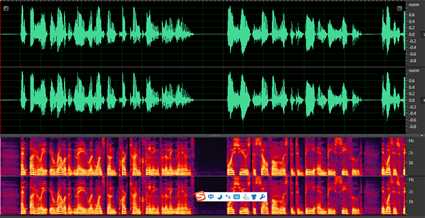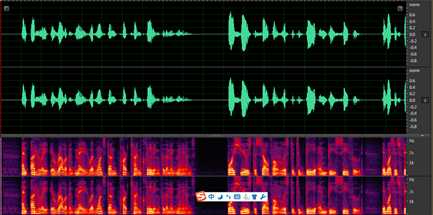标签:
https://en.wikipedia.org/wiki/Wiener_filter
The Wiener filter problem has solutions for three possible cases: one where a noncausal filter is acceptable (requiring an infinite amount of both past and future data), the case where a causal filter is desired (using an infinite amount of past data), and the finite impulse response (FIR) case where a finite amount of past data is used. The first c
ase is simple to solve but is not suited for real-time applications. Wiener‘s main accomplishment was solving the case where the causality requirement is in effect, and in an appendix of Wiener‘s book Levinson gave the FIR solution.

Where  are spectra. Provided that
are spectra. Provided that  is optimal, then the minimum mean-square error equation reduces to
is optimal, then the minimum mean-square error equation reduces to

and the solution  is the inverse two-sided Laplace transform of
is the inverse two-sided Laplace transform of  .
.

where
 consists of the causal part of
consists of the causal part of  (that is, that part of this fraction having a positive time solution under the inverse Laplace transform)
(that is, that part of this fraction having a positive time solution under the inverse Laplace transform) is the causal component of
is the causal component of  (i.e., the inverse Laplace transform of
(i.e., the inverse Laplace transform of  is non-zero only for
is non-zero only for  )
) is the anti-causal component of
is the anti-causal component of  (i.e., the inverse Laplace transform of
(i.e., the inverse Laplace transform of  is non-zero only for
is non-zero only for  )
)This general formula is complicated and deserves a more detailed explanation. To write down the solution  in a specific case, one should follow these steps:[2]
in a specific case, one should follow these steps:[2]
 in rational form and factor it into causal and anti-causal components:
in rational form and factor it into causal and anti-causal components:
 contains all the zeros and poles in the left half plane (LHP) and
contains all the zeros and poles in the left half plane (LHP) and  contains the zeroes and poles in the right half plane (RHP). This is called the Wiener–Hopf factorization.
contains the zeroes and poles in the right half plane (RHP). This is called the Wiener–Hopf factorization. by
by  and write out the result as a partial fraction expansion.
and write out the result as a partial fraction expansion. .
. by
by  . The result is the desired filter transfer function
. The result is the desired filter transfer function  .
.
原始文件,环境噪音已经很弱了

逐帧实时维纳滤波后

标签:
原文地址:http://www.cnblogs.com/welen/p/4996310.html